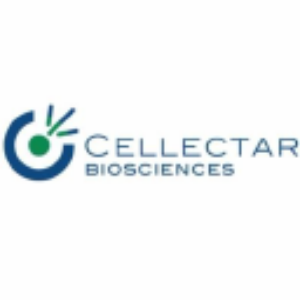Cellectar Biosciences Reports Complete Central Nervous System (CNS) Clearance in Relapsed/Refractory Waldenstrom’s Macroglobulinemia Patient
Iopofosine I 131 Active in Treating Malignancies in the Brain; Confirmed Response in CNS Lymphoma Provides Additional Validation for Continued Development of Iopofosine in Multiple CNS Malignancies
FLORHAM PARK, N.J., Jan. 22, 2024 (GLOBE NEWSWIRE) -- Cellectar Biosciences, Inc. (NASDAQ: CLRB), a late-stage clinical biopharmaceutical company focused on the discovery, development and commercialization of drugs for the treatment of cancer, today announced that its novel phospholipid radiotherapeutic conjugate, iopofosine I 131, demonstrated a pathological response with complete clonal clearance in a relapsed/refractory Waldenstrom’s macroglobulinemia (WM) patient with CNS involvement, also known as Bing-Neel Syndrome (BNS), enrolled in its Phase 2b CLOVER WaM pivotal trial.
“Attainment of complete CNS clearance in a patient with Bing-Neel Syndrome after previous exposure to BTKi therapy is encouraging,” commented Jorge Castillo, M.D., associate professor at Harvard Medical School and director of Bing Center Clinic at Dana Farber Cancer Institute. “The ability of iopofosine I 131 to deliver an effective therapeutic payload across the blood-brain barrier with the eradication of the tumor clone in the cerebrospinal fluid is a valuable treatment attribute for WM patients with relapsed or refractory CNS disease. The potential approval of this novel agent may provide a meaningful therapeutic option for a patient population with limited available treatments.”
As part of the CLOVER WaM pivotal trial, the patient with BNS received the standard WM dosing regimen of two treatment cycles with two doses per cycle for a total of four fixed doses of iopofosine I 131 over 75 days. The patient received the recommended total administered dose of greater than 60mCi. Cerebrospinal fluid flow cytometry showed no evidence of clonal B-cells, and molecular analysis did not detect the MYD88 mutation.
“This confirmed pathologic response with iopofosine I 131 in a malignancy with CNS involvement further validates the potential of our phospholipid radiotherapeutic conjugate to treat CNS malignancies,” said Dr. Andrei Shustov, senior vice president, medical of Cellectar. “Similar to WM patients, there is no standard of treatment and limited therapeutic options for patients with Bing-Neel Syndrome, a more complicated condition and treatment challenge. This very encouraging patient response further supports iopofosine’s development in CNS-related malignancies, including CNS lymphoma and pediatric high-grade gliomas.”
Cellectar previously announced a complete response in a patient with relapsed/refractory primary central nervous system lymphoma (CNSL) as part of its ongoing Phase 2a trial of iopofosine I 131. Currently, there are no approved therapies available to CNSL patients.
Additionally, with the support of a
About Cellectar Biosciences, Inc.
Cellectar Biosciences is a late-stage clinical biopharmaceutical company focused on the discovery and development of proprietary drugs for the treatment of cancer, independently and through research and development collaborations. The company’s core objective is to leverage its proprietary Phospholipid Drug Conjugate™ (PDC) delivery platform to develop the next-generation of cancer cell-targeting treatments, delivering improved efficacy and better safety as a result of fewer off-target effects.
The company’s product pipeline includes lead asset iopofosine I 131, a small-molecule PDC designed to provide targeted delivery of iodine-131 (radioisotope), proprietary preclinical PDC chemotherapeutic programs and multiple partnered PDC assets.
For more information, please visit www.cellectar.com and www.wmclinicaltrial.com or join the conversation by liking and following us on the company’s social media channels: Twitter, LinkedIn, and Facebook.
About Waldenstrom’s Macroglobulinemia and Bing-Neel Syndrome
WM is a B-cell malignancy characterized by bone marrow infiltration of clonal lymphoplasmacytic cells that produce a monoclonal immunoglobulin M (IgM) that remains incurable with available treatments. The prevalence in the US is approximately 26,000 with 1,500-1,900 patients being diagnosed annually. Approximately 10,000 patients require treatment in the relapsed or refractory setting and there are an estimated 4,300 patients requiring 3rd line or greater therapy. There are no FDA approved treatment options for patients progressing on BTKi therapy. BTKi therapies do not demonstrate complete response rates and require continuous treatment. Approximately
Bing-Neel Syndrome is a rare neurological complication of WM that results from infiltration of the central nervous system by malignant lymphoplasmacytic cells. The median time from initial diagnosis of WM to development of BNS is 3.5 years.
Forward-Looking Statement Disclaimer
This news release contains forward-looking statements. You can identify these statements by our use of words such as "may," "expect," "believe," "anticipate," "intend," "could," "estimate," "continue," "plans," or their negatives or cognates. These statements are only estimates and predictions and are subject to known and unknown risks and uncertainties that may cause actual future experience and results to differ materially from the statements made. These statements are based on our current beliefs and expectations as to such future outcomes including our expectations regarding the WM CLOVER-WaM pivotal trial. Drug discovery and development involve a high degree of risk. Factors that might cause such a material difference include, among others, uncertainties related to the ability to raise additional capital, uncertainties related to the disruptions at our sole source supplier of iopofosine, the ability to attract and retain partners for our technologies, the identification of lead compounds, the successful preclinical development thereof, patient enrollment and the completion of clinical studies, the FDA review process and other government regulation, our ability to maintain orphan drug designation in the United States for iopofosine, the volatile market for priority review vouchers, our pharmaceutical collaborators' ability to successfully develop and commercialize drug candidates, competition from other pharmaceutical companies, product pricing and third-party reimbursement. A complete description of risks and uncertainties related to our business is contained in our periodic reports filed with the Securities and Exchange Commission including our Form 10-K for the year ended December 31, 2022, and our Form 10-Q for the quarter ended September 30, 2023. These forward-looking statements are made only as of the date hereof, and we disclaim any obligation to update any such forward-looking statements.
Contacts
MEDIA:
Claire LaCagnina
Bliss Bio Health
315-765-1462
clacagnina@blissbiohealth.com
INVESTORS:
Chad Kolean
Chief Financial Officer
investors@cellectar.com










